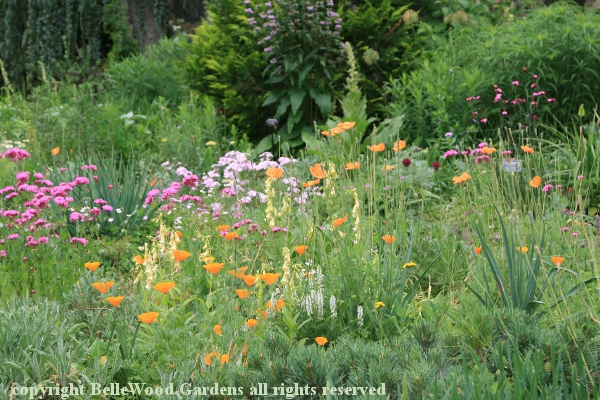
.
If you have any comments, observations, or questions about what you read here, remember you can always Contact Me
All content included on this site such as text, graphics and images is protected by U.S and international copyright law.
The compilation of all content on this site is the exclusive property of the site copyright holder.
Sunday, 10 June 2018
Since today is Poppy Day at Wave Hill, at 2:00 p.m. visitors can join a guided garden walk to look at poppies, poppy relatives, poppy lookalikes. We saw the larger poppy species - Papaver orientale cultivars in the Flower Garden that is in front of the conservatory. Look here if you want to read about them.
Then we traipsed over to the Wild Garden to look at poppy lookalikes. Mostly, this included California poppy, Eschscholtzia californica.
But first, a digression. How to spell this plant's genus name. Named for the Baltic German/Imperial Russian botanist Johann Friedrich von Eschscholtz, I have found it variously given as Escholtzia, Eschscholtzia, Eschscholzia. Take your pick. Given how the man spelled his name I guess I'll go for Eschscholtzia.

They're the orange flowers. As an annual (in one year it sprouts from seed,
grows, flowers, makes more seed, dies) it flings itself around hither and yon.
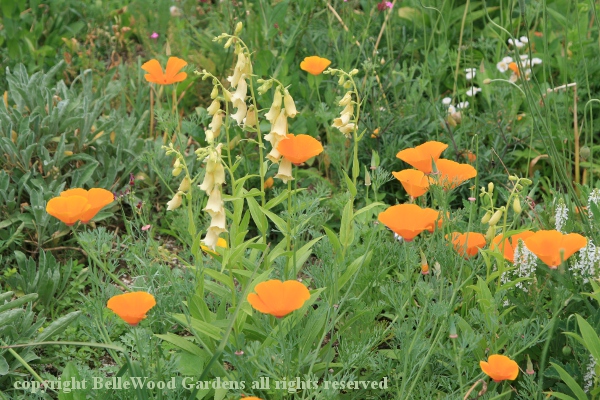
These self-sown combinations can be very attractive - just look at this one
with the taller spikes of soft yellow perennial foxglove, Digitalis lutea.
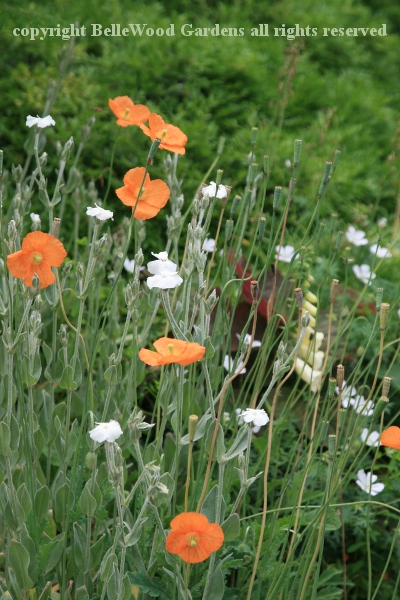
How different Papaver atlanticum looks, its apricot flowers
with white flowered soapwort, Saponaria officinalis 'Alba'.
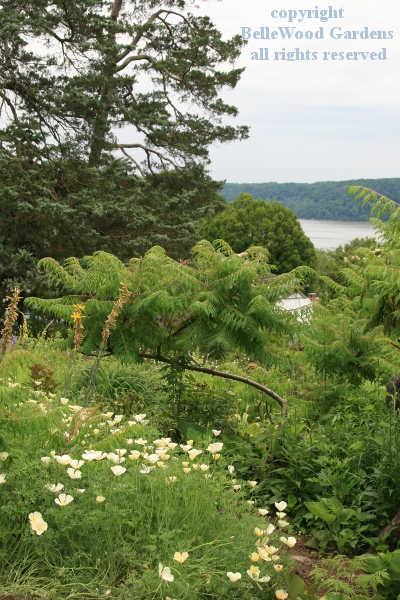
There are some cultivars, cultivated varieties, of California poppy.
Here's a lovely colony of Escholtzia californica 'Buttermilk'. However
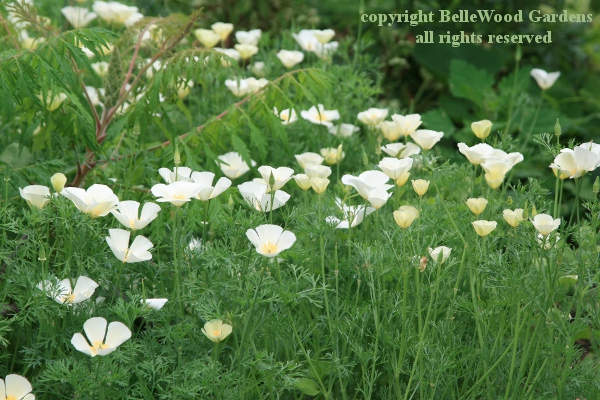
there is a problem. If left to reseed on their own there will be, over time
first a few, then more with golden flowers unless they are rogued out.
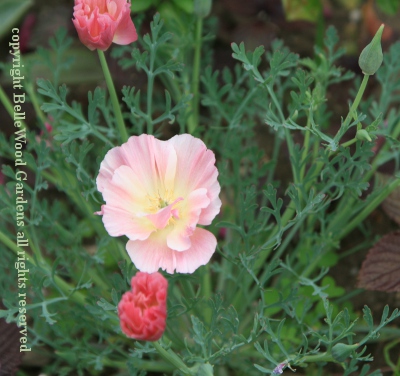
Same story with this charming 'Rose Chiffon' cultivar.
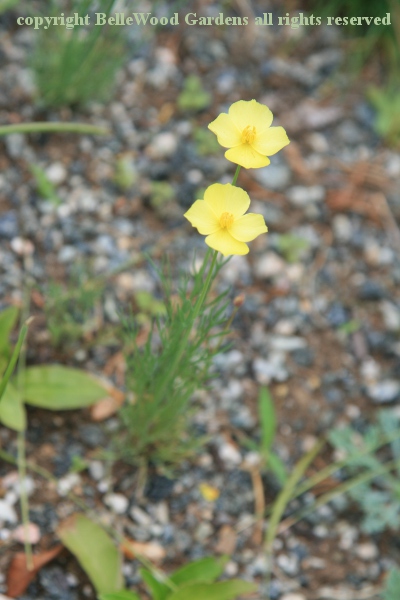
It is not just the smaller, paler yellow flowers with a cute little point to each petal that help to I.D. this species. The thin fine leaves also indicate that this is actually Eschscholtzia caespitosa.
There are some poppy relatives that grow in woodland shade, such as our beautiful bloodroot, Sanguinaria canadensis, with its ephemeral white flowers in spring.
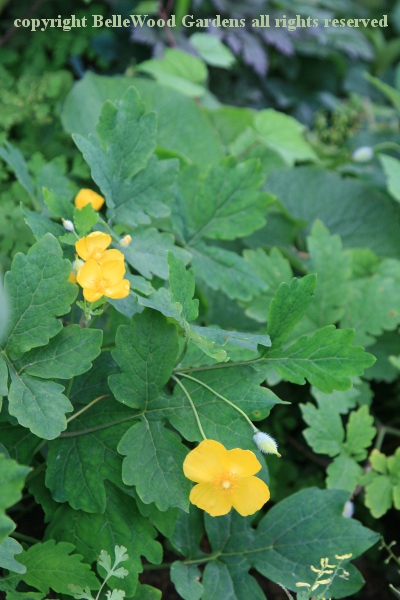
Celandine poppy or wood poppy, Stylophorum diphyllum, is another
member of the Papaveraceae (just a fancy way to say "poppy family")
that is also a wild flower which is native to the eastern United States.
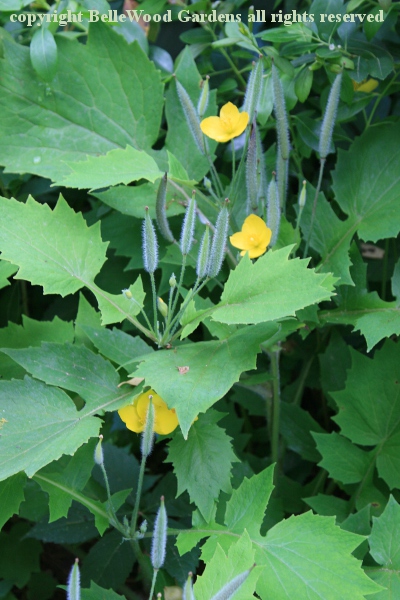
It has a cousin, Stylophorum lasiocarpum, which is native to central and eastern China. Notice the skinnier, upright seed pods, different from the fat drooping ones of the celandine poppy. Also, the leaves of celandine poppy have more rounded lobes while the Chinese species has sharper, jagged leave edges.
An interesting walk in the beautiful gardens of Wave Hill.
Look here for options of other fascinating things to see and do.
Back to Top
Back to June 2018
Back to the main Diary Page